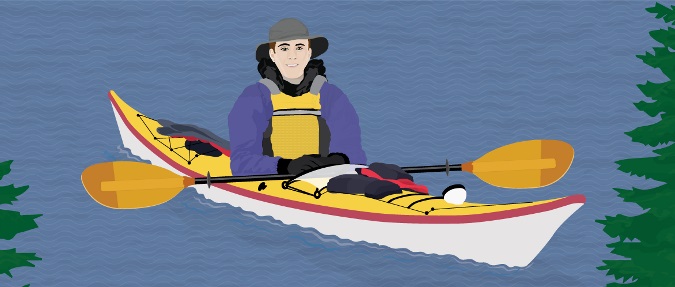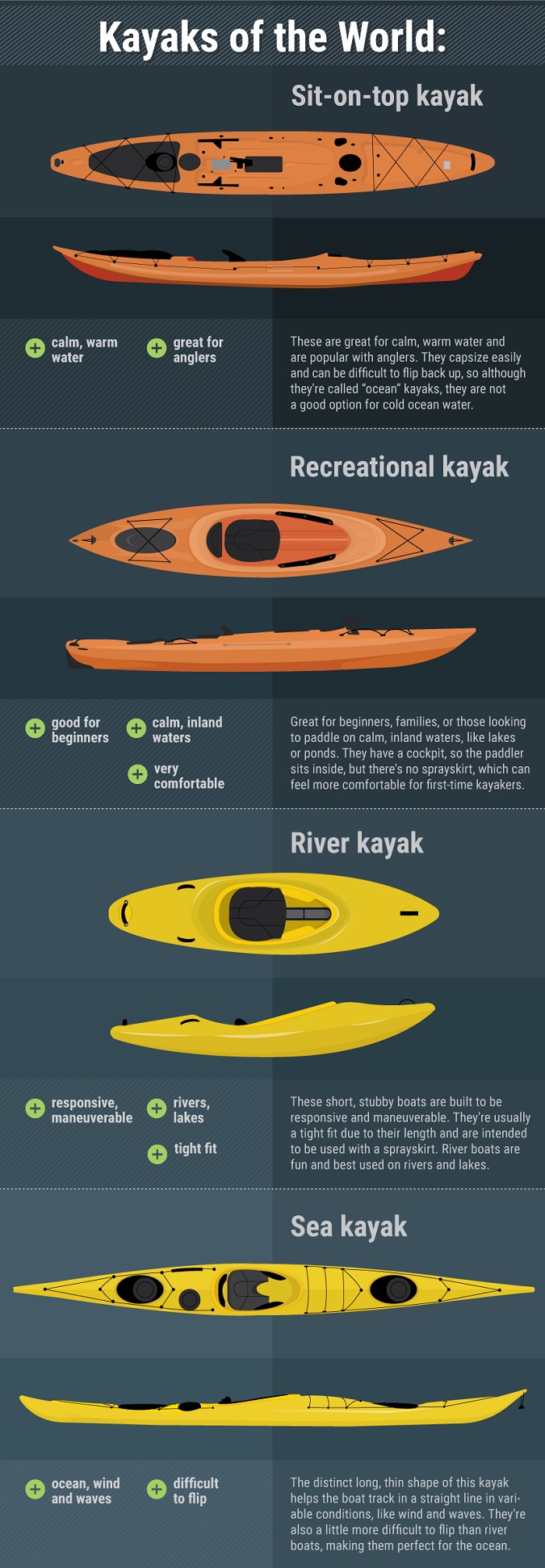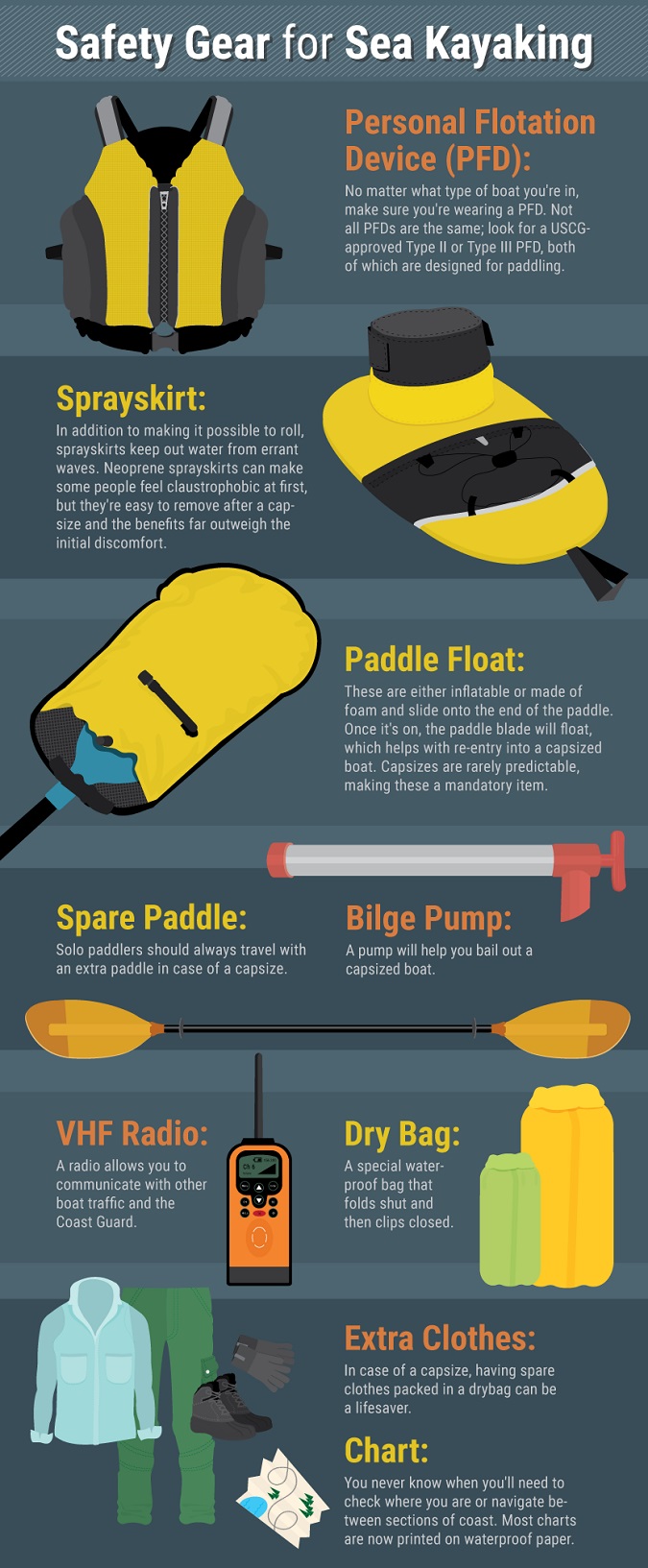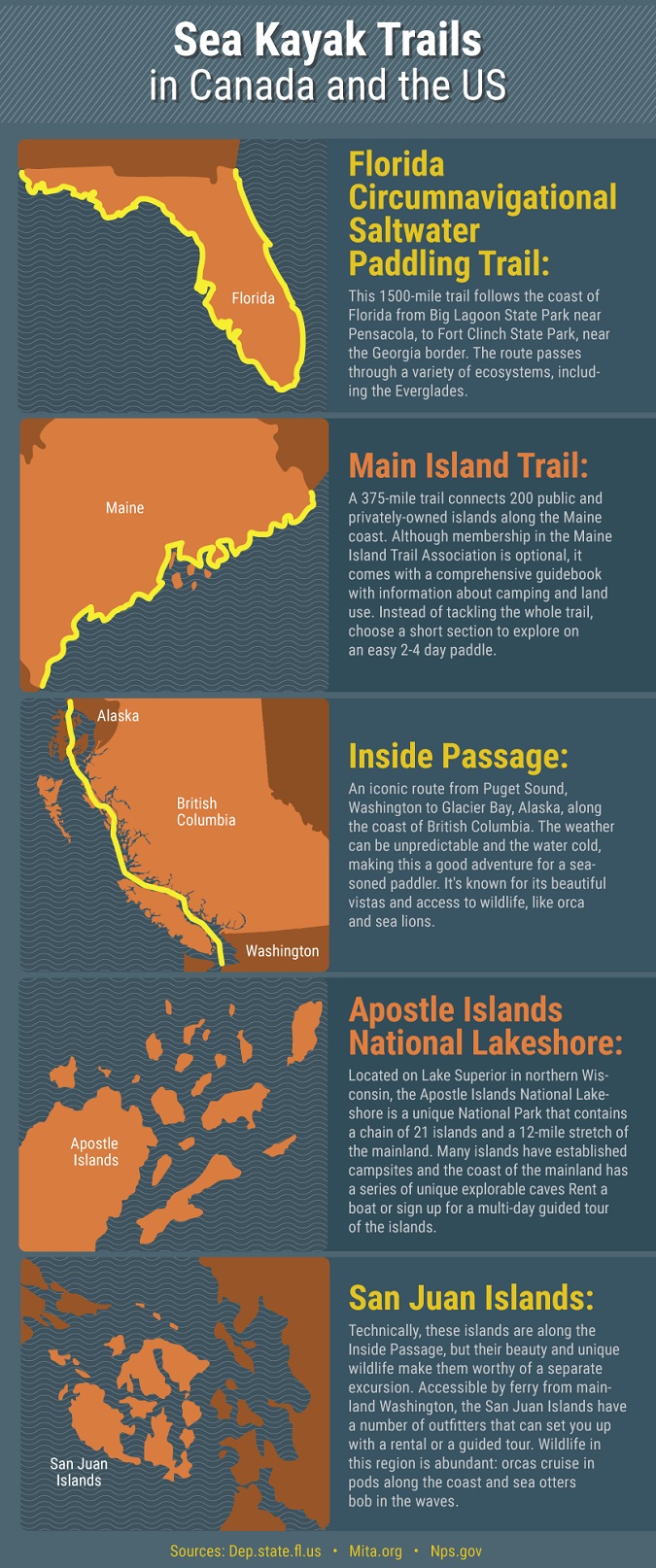
Though it doesn’t get as much attention as other outdoor sports, sea kayaking is a fantastic way to travel through new places – it’s the ocean equivalent of backpacking. The boat’s low profile means you don’t simply paddle over the water – you become part of it. From half-day wildlife tours to multi-month expeditions, sea kayaks offer something for every kind of adventure-seeker. If you’re looking for a new way to explore the wilderness, here’s how to get started with sea kayaking.
History
Kayaks were invented by the Inuit over 4,000 years ago and were used for hunting and fishing in sub-Arctic waters. By sealing themselves in with a sealskin jacket, or skirt, the hunters could roll back upright after capsizing without exiting the boat. The ability to self-rescue through a roll makes it possible for people to kayak in cold or tumultuous water, where a long swim would be dangerous. Nowadays, the sprayskirts are usually made of neoprene, but the effect is the same.

Thrill of the Ocean
What sets sea kayaking apart from other water sports is your ability to become part of the landscape. Paddling is quiet, and the sleek shape of the kayak allows it to cut through the water without creating a big disturbance. The ocean is full of wildlife that is hard to see from shore, but in a kayak it’s not uncommon for curious seals to pop up right beside the paddle or for a pod of porpoises to pass beneath the boat. Sea kayaking allows you to be surrounded by wildlife without disturbing it. These interactions are often unexpected and fleeting, but they leave a lasting impression.

Design
Sea kayaks traditionally come with seating for one (solo) or two (tandem). Less-expensive models are made of plastic, which can weather rough handling on land. Fiberglass kayaks are considered to be much nicer and are higher quality. Fiberglass is easier to patch than plastic, but these boats require careful handling around rocks and on landings because it’s much easier to punch a hole in this material. Some companies still make traditional-style kayaks with wooden frames and skin covers. It’s also possible to buy a folding kayak, which packs down nicely for combination kayak/hiking expeditions.
Another choice to consider when looking at sea kayaks is whether to buy a boat with a rudder, which is controlled by foot pedals, or a boat with a skeg, which is a small keel that can be dropped into the water or retracted when the boat is on shore. The skeg helps the kayak track in a straight line, but it doesn’t help the paddler steer. Skeg boats require strong paddle technique because all changes in direction have to be done through paddle strokes. For some people, this makes paddling a skeg boat much more enjoyable than paddling a boat with a rudder.
Sea kayaking is a versatile sport: the same boat can be used for a casual afternoon paddle on placid waters one day and a months-long expedition along a remote coast the next. True sea kayaks have watertight compartments that are intended to hold items, like a backpack built into the boat. The hatches can hold a lot of gear and food, allowing paddlers to pack a single boat for a 30-day expedition.
If you’re interested in a little more adventure, the sport of sea kayaking has evolved to include surfing and, on the extreme end, paddling in rock gardens, where surf crashes against underwater rock outcroppings. Long-distance paddlers have completed everything from circumnavigations of the Great Lakes to expeditions along the coast of Alaska. In 2011, a Polish man paddled across the Atlantic Ocean in just under 100 days. With the right gear and expertise, the possibilities are endless.
How to Learn
Kayaking has a few quirks that make instruction more important than it is for activities like backpacking. To begin with, a proper sea kayak requires the paddler to sit with their knees slightly bent, which comes as a surprise to many beginners. Another common assumption is that kayaking requires strong arms: a strong paddle stroke actually relies on the rotation of the core more than it does on the arms.
The biggest concern for beginner paddlers is capsizing. Although they may feel tippy when you first go out on the water, sea kayaks are generally very stable. The “tippiness” comes from the primary stability, which is the boat’s tendency to wobble side to side in the water. This is different from a boat’s secondary stability. Most kayaks have good secondary stability, which means they are unlikely to capsize until you push them to an extreme angle. Because of this, it usually takes some compelling waves or user error to capsize a kayak. However, once a boat has capsized, getting out and then back in the boat can be a bit of a challenge. A proper wet exit, as it is called, takes practice and is a crucial safety skill for any sea kayaker.
The best way to get started sea kayaking is to take a course with a certified instructor. The British Canoe Union (BCU) and the American Canoe Association (ACA) both offer courses for novices through experts and their standards are internationally recognized. These classes are structured in tiers, which gives students time to practice on their own, develop some more abilities, and then go back for the next level if they’re ready for a new challenge.
Certified instructors will go over everything, from the structure and parts of the boat, to proper paddling techniques, and executing a wet exit. If you don’t live by the water, don’t despair: many YMCAs or paddling clubs in landlocked regions offer these classes. And, practicing in a warm pool is a lot nicer than capsizing in the cold ocean. No matter where you learn, taking an intro course in sea kayaking is the best way to get started.



